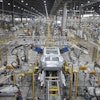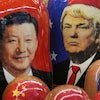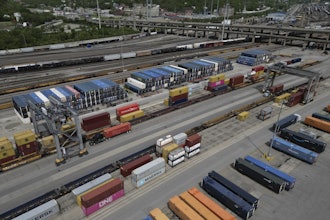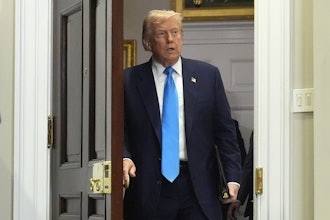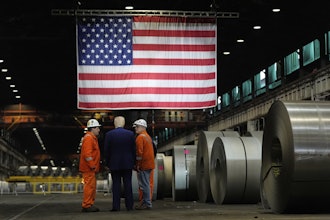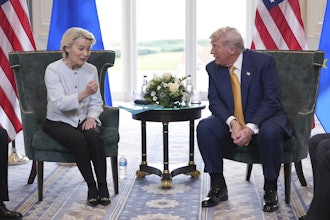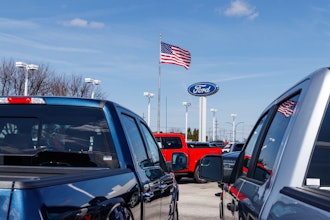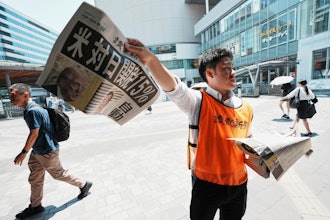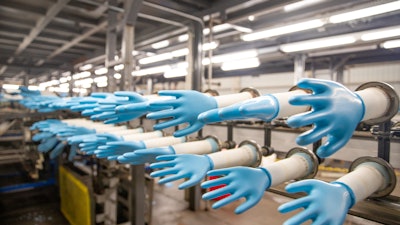
The case for onshoring personal protective equipment to meet near-term COVID-19 needs and adequately prepare for future pandemics is a strong one. The U.S. International Trade Commission contends that 80-90% of U.S. PPE demand pre-pandemic was filled by imports, largely from China, Malaysia, Indonesia, Thailand and other Asian countries. And while tracking was inexact, it is estimated that less than half of all PPE was manufactured in North America.
Predictably, when the U.S. attempted to ramp up acquisition of masks, gloves, eye protection, respirators and other PPE through these pre-existing overseas channels, supply chain breakdowns and profiteering created a perfect storm of crippling delays, price gouging and inferior products that put Americans at risk. Those who were able to lock in PPE paid a heavy price for the privilege. By April 2020, the cost of PPE had spiked more than 1,000%.
It also proved difficult, given time constraints and urgency of need, for government and industry purchasers to properly vet overseas PPE manufacturers. Many ended up with less than reputable suppliers, inferior products and those that were over promised and under delivered.
Not wanting history to repeat itself and recognizing that protecting Americans’ health and the economy requires a short and long-term game plan, government agencies charged with addressing PPE needs, along with the Biden administration, moved aggressively to re-shore domestic production. Notably, this has occurred through legislation extending the Berry Amendment to PPE, as well as the bi-partisan Make PPE in America Act signed into law by President Biden last year as part of the Infrastructure Investment & Jobs Act.
Rebuilding U.S. supply chains is difficult enough in more stable periods of history. Attempting to do so during a once-in-a-lifetime pandemic is an exercise fraught with unique challenges and risks. But it is necessary; if we walk back from the current, positive manufacturing onshoring momentum built over the past several months, the U.S. will find itself stuck in the same PPE shortage cycle, and unprepared for future pandemics. To avoid this scenario, policy and industry stakeholders should consider the following strategies.
Apply Early Pandemic Lessons to Onshoring
Onshoring momentum can be challenging to maintain. When the current pandemic ebbs, or in more stable periods between COVID variant outbreaks, the temptation will exist for domestic PPE buyers to revert back to a “cheapest overseas supplier” mentality. Early signals indicate the temptation will be strong. Over the past two years, multiple PPE suppliers in Asia have been banned from shipping to the U.S., even if temporarily, for forced labor practices and other violations. Countries with major suppliers not yet hit with bans, such as China, are seizing on this opportunity to gain market share, approaching healthcare entities and Group Purchasing Organizations (GPOs) with PPE pricing that domestic manufacturers and suppliers will find difficult to match.
But this is where early pandemic lessons must be heeded, because cheap overseas PPE can quickly become crippling from a cost perspective if buyers run into exorbitant shipping costs, delays or inferior product issues. Healthcare organizations and other businesses procuring PPE for frontline workers must apply the same long-term approach the U.S. government is taking, and remain committed to onshoring so that history doesn’t repeat itself.
Be Wary of Onshore Opportunists
While Asia PPE suppliers have dominated the U.S. market for years, they do not hold a monopoly on illegal and questionable business practices. As more PPE funds have become available, inevitably opportunists here in the U.S. have come out of the woodwork. But for government agencies, healthcare organizations and businesses procuring PPE, the risk isn’t limited to counterfeit masks and used gloves.
While PPE mask production facilities can be stood up and producing in a matter of months, high-quality PPE nitrile glove manufacturing is a complex, resource-intensive multi-year process, one that few organizations are equipped to execute. Eyeing seven and eight-figure contracts with government agencies, healthcare and hospital networks, and other industries, we’ve seen PPE brands pop up almost overnight insinuating they either have the on-shore capability or can rapidly build the capacity to manufacture nitrile gloves to try and get a piece of government contracts and other frontline worker industries like healthcare.
Medical-grade nitrile gloves, for example, are heavily reliant on nitrile latex as a raw material, for which there is a finite supply, and production capabilities few facilities and companies can offer. Some offering bold claims of being able to produce billions of gloves have, in fact, never made a single glove. But this hasn’t stopped eager venture capital funding from flowing in their direction.
If a PPE Deal Sounds Too Good to be True, It Is
There are countless horror stories of organizations that purchased PPE from Asia, only to find out they were duped into paying millions of dollars for an inferior product. One businessman ordered $2 million worth of gloves from a Thailand company last year, only to find out from upset clients upon delivery the gloves were re-used and dirty.
Product risks are not unique to the U.S. In its recently released Department of Health and Social Care annual, it was revealed that the United Kingdom has lost nearly £10bn on defective, unsuitable and overpriced personal protective equipment. The how and why is similar to what has played out in the U.S. — the need to rapidly meet surging demand during the early pandemic peak put the premium on speed over quality.
Counterfeit, defective and overpriced PPE – much of it coming from overseas sources that were difficult to vet in compressed time periods – contributed to the $674 million in estimated fraud losses due to COVID-19 scams as of January 2022. Domestic PPE buyers and government agencies entering into contracts should heavily scrutinize and analyze claims by overzealous domestic manufacturers that don’t pass the smell test on pricing and delivery claims, especially when it comes to investment in new market entrants.
These claims can come in several forms:
- Cost of raw materials. Some domestic PPE makers cite U.S. raw material costs on par with Asia that allow competitive pricing. But any closing of the pricing gap will be short-lived; Asia is already ramping back up production and it will soon be extremely difficult for U.S. manufacturers to compete on price.
- Established materials supply partners. Businesses receiving infusions of VC and/or government funds to build out manufacturing facilities still need meaningful supplier agreements (i.e. – access to nitrile for gloves) and a market presence to execute against competitive overseas suppliers.
- Dubious volume and timeline markers. All PPE is not created equal. The time, money, resources and people required to manufacture PPE masks is dramatically different from producing PPE gloves at scale. Some new-to-the-market domestic PPE brands are pledging to deliver billions of product in a matter of months. PPE glove making requires massive investments in production, labor and raw nitrile that can take years for new entrants building these capabilities up from scratch — not to mention regulatory hurdles and red tape.
Supply chain disruptions have not been lost on U.S. government agencies charged with preparing for future pandemics. Nor has the urgency escaped the Biden Administration, which has made it a priority to ease access to PPE produced on-shore end-to-end. If there is a supply chain challenge during another pandemic wave and the U.S. can’t quickly get gloves, masks or other PPE, it could be catastrophic. Reshoring PPE manufacturing is a complex process where much can go wrong, but one the U.S. needs to get right




